The Fibonacci Sequence :- When Maths Becomes Golden!
Whenever people hear the word "Mathematics", they are always quick to think "complexity" and sometimes "Magic". I would even say many people do try to avoid it even though it unapologetically appears in almost all we do in our daily activities either directly or indirectly.
I can remember quite well what Mathematics was like during high school days and even throughout college. Many of my mates saw it as a hill and to climb, required them to study extra hard for it like a 10-unit course (if there exist one). However, I've always seen maths as fun and engaging! In fact, it is the best thing after sliced bread!
Though I know it could be tormenting and crazy times when solving some maths yield no result but equally, when it is gotten, life wouldn't be any funnier at that moment. These characteristics of maths brought me to look up the amazing, stunning and fascinating concepts of the Fibonacci sequence and the Golden ratio which I'm going to be sharing with you today.
The Fibonacci Sequence is simply a series of numbers that exist such that after the first two terms, the preceding numbers are found by adding the two successive numbers before them.
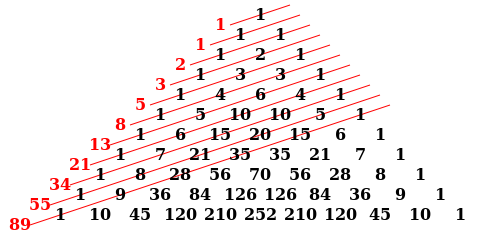
Wikimedia Creative Commons : Illustration of Fibonacci numbers as the sums of diagonals of Pascal's triangle.
The common representation of the Fibonacci Sequence is the one that starts with "one" as in: 1, 1, 2, 3, 5, 8, 13, 21, 34 and so on.
Looking at the sequence, we can see that after the first two terms; 1, 1, the successive numbers exhibit the property earlier stated i. e. each number exists as an addition of the two preceding numbers.
The Golden ratio, on the other hand, is another beautiful and widely applied concept and it is related to the Fibonacci number.Its value exists approximately as the ratio existing between each successive Fibonacci number, hence, its name "Golden Ratio".
It is today known as Phi, popularly represented by the Greek letter, φ which has a value of approximately 1.6180339887.
I know it could be getting boring already even from the definitions (Yeah, Maths is annoying!). My aim in this post is definitely not to feed us with just some mathematical terms and its formula but rather is to introduce to us the uncanny yet fascinating appearance and application of these beautiful concepts in our daily lives. So, to make it simpler, I will like to first tell us a bit about the origination of the Fibonacci sequence.
The introduction of the Fibonacci sequence is credited to the great Italian mathematician Leonardo of Pisa, known as Fibonacci. Even though it was discovered that the numbers earlier originated in the Hindu-Arabic arithmetic system which Fibonacci studied while growing up, the numbers were first introduced in his book Liber Abaci (1202). It was called the Rabbit Problem for its use in analyzing the birth sequence of rabbit population in a year.
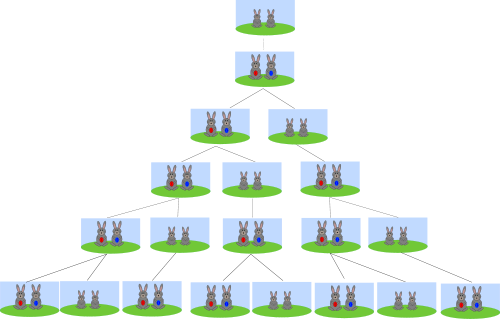
The argument was based on the fact that Rabbits reaches sexual maturity after one month and observes a gestation period for another one month. The birth sequence thus sees the birth by the new pairs and the original parents follow a 1 pair, 2 pairs, and 3 pairs series, resulting in 233 pairs of Rabbits in a year. Since then, the concepts have evolved into the Fibonacci sequence of today represented in many forms and its existence in many areas of our daily lives has been uncovered.
As promised, we are not here for the mathematics. Thus, I will move to introduce to us many fields of the existence of the Fibonacci Numbers and the Golden Ratio.
BOTANY
Yeah, you read right! Botany it is!
- Flower Petals
If we count the number of the spirals on the Sunflower shown, we will see that there are 13 anticlockwise spirals and 21 clockwise spirals. These numbers are Fibonacci numbers and exist in many other flowers like the lily, which has three petals, in buttercups, which have five petals, in chicory, which have 21 petals, in daisy, which have 34, and so on.
This growth pattern of the flower petals was found to exist so that the petals decrease the overlapped area to get more sunlight and also to utilize more space.
- Tree Branches
They found that if a tree starts with a single branch, after a period of time, say a year, the tree grows to two branches and then, in the next year, it grows to three branches and the sequence continues in the Fibonacci series pattern.
An example of the growth pattern of branches is noted in the way the stems are formed in sneezewort. It can also be traced to the growth pattern in the root systems of plants.
THE BEE ANCESTRY PATTERN
As we all know, the breed form of the Bees is quite special. The Male is known to have just one parent - a female, while the female has two parents - a male and a female. Observing the family tree, it means the male has 1 parent - the female, which in turn has two parents i.e, 2 grandparents for the male bee and again 3 great-grandparents, 5 great great-grandparents, 8 great, great great-grandparents, and so on.
This sequence, 1, 2, 3, 5, 8, .... is the Fibonacci sequence and is clearly exhibited in the Male Bee ancestry pattern. Following the same pattern for the female, we would notice an ancestry pattern of 2, 3, 5, 8, 13, ... is the pattern being displayed.
Also, dividing the number of females by the number of males in a Bee colony typically results in a value very close to Golden ratio's approximate value, 1.618 and thus showcase that the Bee ancestral physiology also follows along the Golden Curve rightly.
THE HUMAN X CHROMOSOME INHERITANCE TREE
As found in the Bee Ancestral code, the Fibonacci sequence is exhibited in the manner that the Male human's X chromosome is inherited in the 1, 2, 3, 5, 8,... series pattern. The Male has two parents - Male and female with one contributing an X chromosome.
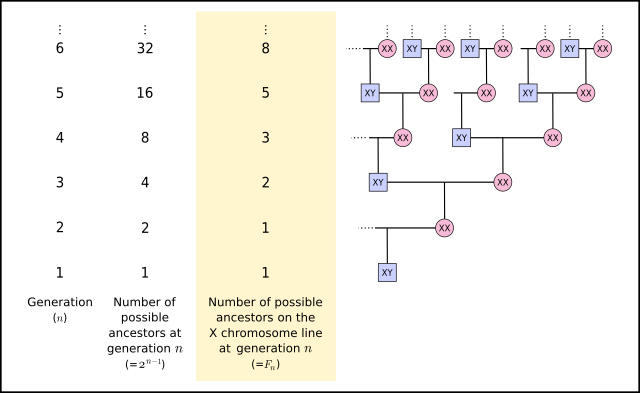
The female parent's male parent and the male parent's male parent also contribute one X chromosome each, making 2 X chromosomes from the grandparents, the paternal great-grandparents also contribute X chromosomes to make 3 X chromosomes and the sequence continues and the series 1, 2, 3, 5, 8 and so on is achieved for the Male descendants of the first parents.
Isn't that cool?
PROPORTION OF THE HUMAN BODY
Another fascinating appearance of the concept of Fibonacci Sequence and the Golden ratio is in the proportion of the human body parts.
It was found that our bodies are in a proportion that coincides with the Golden ratio and the Fibonacci numbers.
It was also found that if measured, the distance from the navel to the floor and the top of the head to the navel is approximately equal to 1.618 - the golden ratio. The segments of the fingers also have the same fate in that when measured, the length from the tip of the finger and the next section of the finger differs by roughly the ratio of phi.
This property is also seen in some animals too. Common ones are the whale, dolphins, sand dollars, starfish and so on.
ARTS AND ARCHITECTURE
The beautiful concept of the Golden ratio and the Fibonacci sequence also found its way into Art and Architectural designs. Though, it has longed being perceived that the usage of the Golden Rectangle by the Greek has been in existence before the new psychologists tested it. They found the Golden rectangle which has a side ratio of 1 to 1.618 to be the best kind of rectangle for making their frames and other designs.

It then became a popular concept and people have since been adopted in paintings, building and even music by popular people like Leonardo da Vinci, Salvador Dali, and Claude Debussy, and so on. Heinrich Agrippa, a 16th-century philosopher drew a man over a pentagram inside a circle to demonstrate the concept of the golden ratio in the body part length differences.
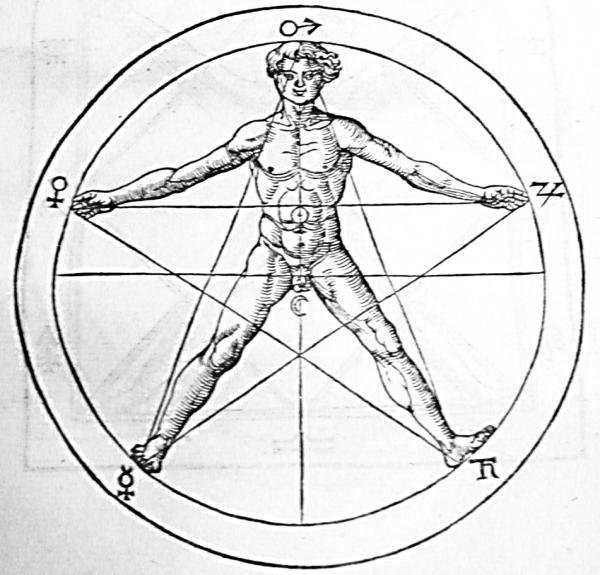
The Pyramid of Egypt,the Parthenon's facade, Great Mosque of Kairouan, Naqsh-e Jahan Square and hot of many other structures were found out to be circumscribed by golden rectangles.
STOCK MARKET ANALYSIS
Surprisingly or not, the Fibonacci sequence also finds application to trading. Through the technique of Fibonacci Retracement, investors estimates and forecast the changes that the price of a particular stock could take while basing such prediction on certain ratios found within the Fibonacci numbers.
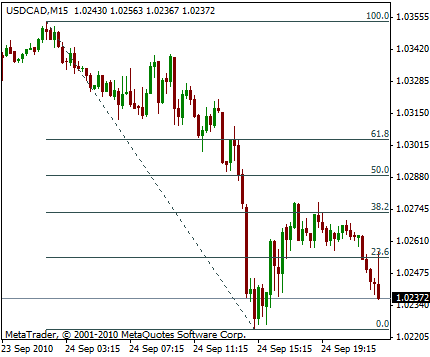
The Fibonacci Retracement is a technical move for estimating support and resistance levels as regards a predictable change or move in the stock price. The Fibonacci retracement analysis is done by specifying two endpoints as specified on the chart and dividing using vertical lines traced using some specified Fibonacci ratios. 0% represents the beginning of the retracement, while 100% represents a complete reversal to the initial position before the move. After identifying the levels, horizontal lines are drawn so as to estimate possible support and resistance levels.
After tracing the support and resistance levels, the investor (or trader) can then use the estimates to buy stock when the value decreases and sell stock as it peaks.
The Fibonacci Pattern and Golden Ratio also extends to some other areas like the:
- Spiral Galaxies
- Hurricane
- The Uterus
- DNA Molecules
- Animal fight patterns
- Pinecone
- Ocean Wave
- Shell Patterns and many more.
As we can see, the Fibonacci Sequence and Golden Ratio isn't just for Mathematicians but rather extends to many fields of applications and considerations. Great Photographers, Architects, PAinters and many more improvise the concept into their works to make a resounding feeling and awesome look.
I believe I'm able to convince us a little that mathematics can be as well fun and stunning! And is void of any magic of any kind.
Thanks.
REFERENCES
Yining L., Wangchun P., Huixia C., and Ya L., "Fibonacci Numbers in Daily Life". http://cklixx.people.wm.edu/teaching/shu15summer/Group3-report.pdf
Cashous W. B. and Allan C. P., 2016 "The History and Applications of Fibonacci Numbers.". University of Nebraska - Lincoln, DigitalCommons@University of Nebraska
If you write STEM (Science, Technology, Engineering, and Mathematics) related posts, consider joining #steemSTEM on steemit chat or discord here. If you are from Nigeria, you may want to include the #stemng tag in your post. You can visit this blog by @stemng for more details.


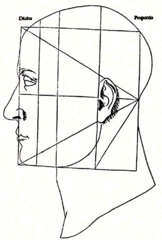


Great work I've been aware of Fibonacci numbers and Golden Ratio on a cursory surface level for many years but this is the first time I'm seeing a truly simple and understandable layman explanation.
Thanks!
It is clear now to anyone paying attention that mathematics is woven into the fabric of reality itself. We don't create or invent maths, we discover it.
Exactly! It's all about discovery!
I'm happy to hear that my post helped you understand more.
Maths is everywhere, we only need to look deeper for its interpretation.
Thanks for stopping by.
Hi @mrbreeziewrites
We have selected your post as post of the day for our DaVinci Times. Our goal is to help the scientific community of Steemit, and even if our vote is still small we hope to grow in quickly! You will soon receive our sincere upvote! If you are interested in science follow us sto learn more about our project.
Immagine CC0 Creative Commons, si ringrazia @mrazura per il logo ITASTEM.
CLICK HERE AND VOTE FOR DAVINCI.WITNESS
Keep in mind that for organizational reasons it’s necessary to use the “steemstem” and “davinci-times” tags to be voted again.
Greetings from @davinci.witness and the itaSTEM team.
Thanks for the acknowledgement. I'm honored being your pick. You guys are doing well......
Keep up the good work.
The general rule is that if you are looking for sequence in nature you are going to find it. So it is more helpful to explain why a sequence occurs or to explain why in certain situations a sequence does not occur. Verification is not a proper scientific methodology.
Wow... so much uniqueness about the Fibonacci series. I'm fascinated by its occurrence in nature, speaking about the Petal flowers. I once cut open a papaya and found a perfect star in it. A star has 5 corners which is a number in the Fibonacci series (obviously).
Speaking about mathematics, people find it complex and boring like you have said. However, a careful attention may show otherwise. This article is one of such things that proves the interesting nature of maths.
Kudos @mrbreeziewrites.
Thanks so much for the insightful comments. Happy you could relate to the post enough to give an example.
Yes! Maths is fun and stunning! Only requires patience and attention...Thanks for stopping by
Very interesting concept i must say. The Fibonacci sequence was one of my favorite discoveries in maths. I was psyched when I found out how they play roles in nature.
Great post, I must say.
Thanks for stopping by. It is indeed a great one....
Fibonacci series sounds Italian.. Was it discovered by Leonardo DaVinci?..
From what is explained there are series of things the Fibonacci series could be found on. Quite interesting sir..
As for math all it needs is full attention and concentration.
As stated in the post, it is credited to an Italian mathematician
Quite a lot of things... Think of one.... It's always there...
Thanks for stopping by
I watched one series about Leonardo DaVinci was awesome.. I seen to have forgotten the name of the series but Leonardo was an awesome artist and an engineer!
Human copy nature. So I guess that maths will always have a part of nature. Coincidentally I'm writing a math post. Let's see how it goes. Good job here.
Yeah, Math cut across everywhere despite its perceived "complexity"
Thanks for stopping by..Anticipating ur post
Can we really live in a world without maths? I doubt.
Definitely not!
IVe always heard about the Fibonacci series but not understood it in this way. Thanks for sharing this post
It was indeed a good read!
Thanks for the warm words. I'm happy my work could help that much.....
Excellent post. Thank you!
Thank you too
The sequence appears in many settings in mathematics, fine, but I never really knew it does in other sciences. In particular, the shape of many naturally occurring biological organisms which are governed by the Fibonacci sequence.
Good job for the extremely detailed information @mrbreeziewrites
Yes, it is that extensive and wide in existence..... Thanks for the comments
You're welcome